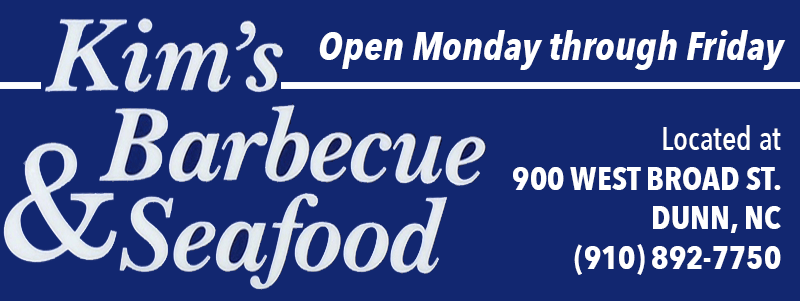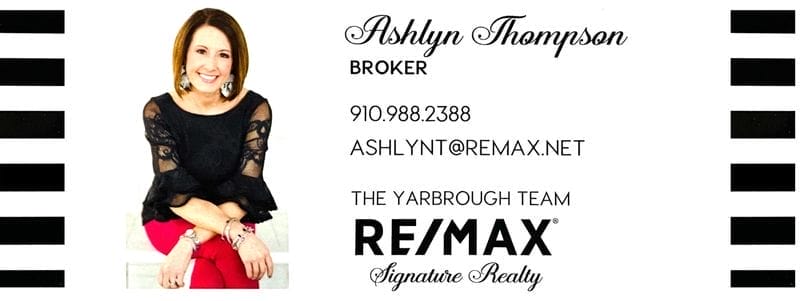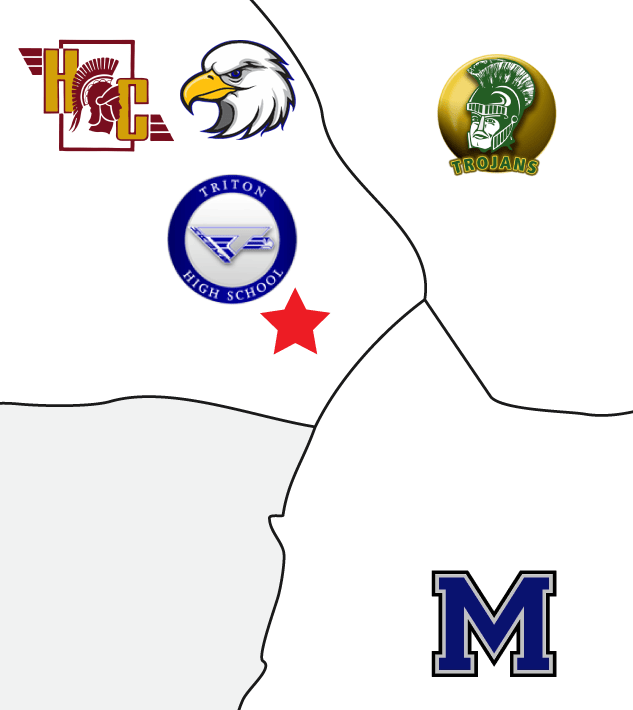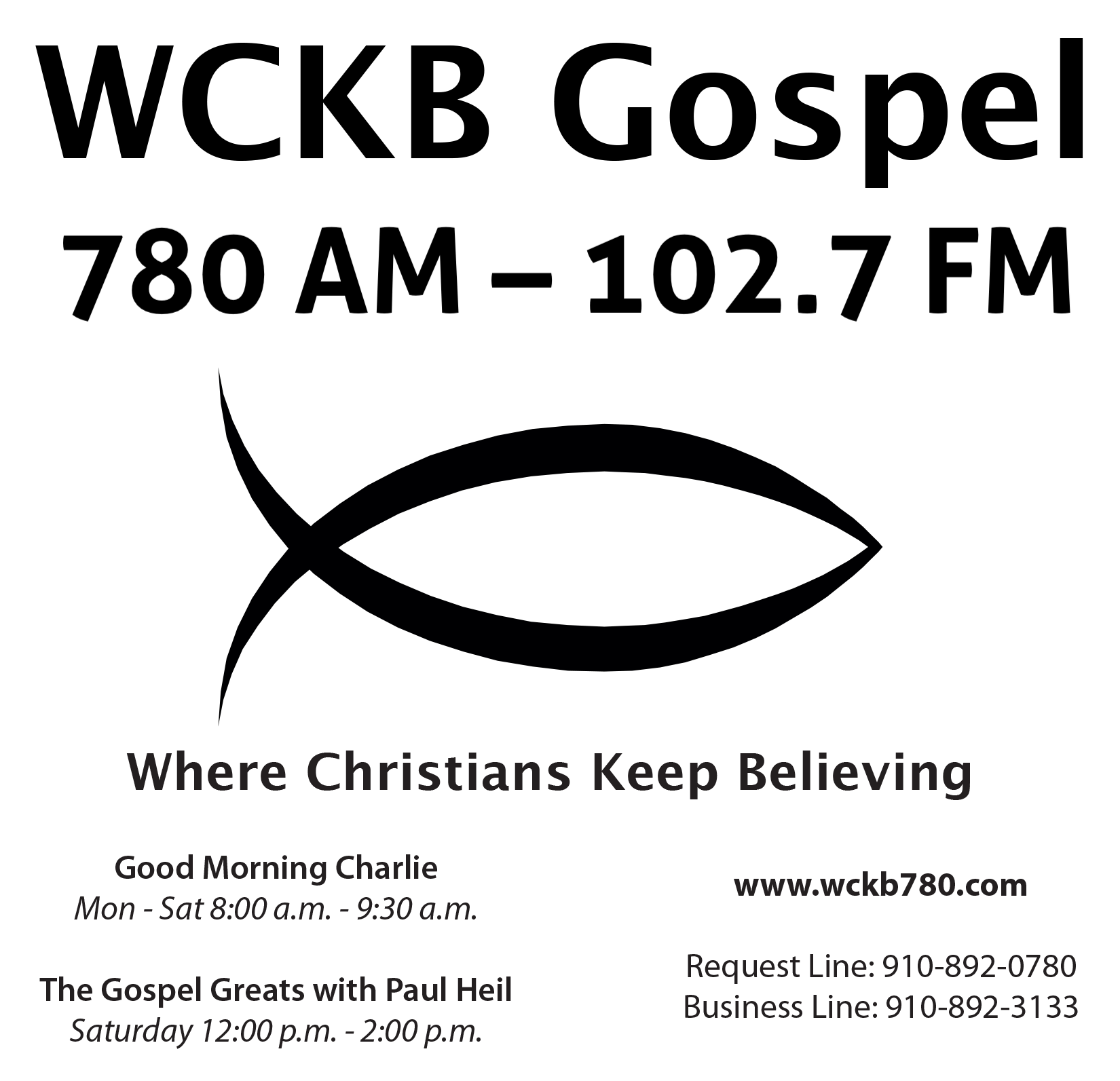
The trophy from Campbell’s lone national title in athletics.
(Campbell photo)
BUIES CREEK — Golf is an individual sport with its nuances honed and sharpened through hours and years of practice and tested in tournament play against other competitors who have trod a similar path.
Internationally, in the Ryder Cup, and collegiately, individuals make up teams to represent their country or school with hopes of claiming the highest honors possible.
In the late 1960s, a group of young men converged on Buies Creek and formed a powerful program that advanced to the NAIA national tournament eight times in its final 10 years of competition on that level before Campbell moved to NCAA Division I in 1977-78.
With a roster comprised primarily of players from North Carolina, Danny Roberts led the Camels to a pair of national tournament appearances, including a third-place finish in 1969 before handing over coaching duties to Hargrove B. Davis after Roberts was elevated to men’s basketball coach at Campbell.
Five decades ago on June 12, 1970, All-Americans Sam Brewer and Scott Irby and the rest of the Camels lifted the NAIA National Championship trophy — still Campbell’s only team national title — at Claycrest Country Club in suburban Kansas City, Mo. That group, which won the 72-hole event by four strokes over runner-up Southwest Texas State, was in the midst of six-consecutive trips to the NAIA finals.
Even more impressive is that over the last 50 years, the Camels of the late 60s and early 70s that split their practice sessions between Chicora Country Club in Erwin and the now-closed Sippihaw Golf Club in Fuquay-Varina, have stayed in close contact. Lifelong friendships, many of which began in junior and high school golf tournaments throughout the state, were strengthened by years of competition and comradery in Buies Creek.
The Formation
Roberts took over as golf coach in 1963 and began assembling the foundation of the program that captured eight district crowns in 11 years beginning in 1967. He landed Washington, N.C., native Jimmy Gurkin in 1965 — who led the Camels to national tourney appearances in his junior (1968) and senior (1969) years before going on to a career as a teaching pro.
“The first year, I had to take what was there,” said Roberts, who served as Campbell’s golf coach from 1963-69 and then again from 1983-87. In between, he coached the Camel basketball team to a record 233 victories, two NAIA national tournament appearances including a runner-up finish in 1977, and guided the program in its first six seasons on the Division I level.
“I started recruiting,” said Roberts, who still lives in the Buies Creek area and is a fixture at home basketball games. “At that time, nobody in the ACC except Wake Forest was really recruiting in golf.
I went to the state high school tournament and junior tournaments. Every time I read the scores in the paper, and a kid shot a pretty good round, I’d send him a letter.”
Those efforts led to the 1967 addition of Eastern North Carolina products Julian Bunn from Broughton High School in Raleigh and Kenny McDonald from New Hanover High School. A year later, Sammy Brewer transferred to Campbell from Wake Forest while Curt Soule joined the program as a freshman. Scott Irby followed from the Demon Deacons the following season.
The Routine
Keith Hills Golf Club on campus wasn’t built until 1974, so those NAIA powerhouse teams had to travel off campus to practice and compete. Oftentimes, Bunn’s blue 1961 Buick station wagon served as the team’s transportation to and from area courses. With a team that sometimes included 14 or 15 players, Coach Roberts also ferried players to practice in his own station wagon.
“We would go out and play golf in a light rain or 35-40 degrees, it didn’t matter,” recalled McDonald, who now lives in Jacksonville, Fla. “Literally every day, there’d be a nucleus of us ready to pile into the car and go.”
Not only did many of the players share a common background, but they also were keen for the daily competition.
“We were all just so dadgum competitive,” said Irby, who has served as Vice President at BB&T in Raleigh for the last two decades. “Nobody wanted to lose to anybody. We played almost every single day just trying to beat each other’s brains out; then we’d go home and cook a steak.”
Roberts never had to urge his team to practice. In fact, Brewer, Gurkin, McDonald and Soule entered careers as golf professionals, while the Bunn brothers founded Continental Golf in 1972 and plied their trade in the club repair, custom-fitting trade, while also operating Carolina Custom Golf from 1977-2008.
“We were all so dedicated,” McDonald said. “We would play golf through the heart of winter. We were golf rats all the way. Picked up our own (practice) balls, had our own shag bags. Chicora had a little driving range. We’d hit balls. That was our day. It was a simple golf life, college life.”
Roberts housed up to four golfers per year in an apartment adjacent to his home in the Lake Small neighborhood of Buies Creek. Sometimes he provided a ride to class for his tenants who preferred that to walking about a mile to campus.
“Coach Roberts was our mentor, our hero,” said McDonald, who went on to serve as a club and teaching pro in New York, New England and Florida until 1992. Then he worked as a marketing agent on the professional tour until retiring in 2018.
The Friendship
Brewer and Soule both hailed from Wake Forest and knew Broughton grads Julian Bunn and his younger brother John from junior golf events. Gurkin and Irby were from “Little” Washington, while McDonald and Jackie Jackson called Wilmington home.
“They all grew up playing junior golf together,” recalled Roberts. “They all knew each other. They were all competitive. They were all good kids. They listened. We never had any kind of problem, jealously or anything. Everybody pulled together, worked hard, and whatever I asked them, they did. It wasn’t me; it’s just a special group of guys.”
Uncertain that he even wanted to attend college, Bunn was notified by his father that he was going to Campbell College following his graduation from Broughton. Over the years, Campbell developed a reputation for students leaving Buies Creek over weekends to go home to work or play, or travel to Raleigh or Fayetteville for entertainment.
“We had a great golf team with good friends of ours, so that made it fun,” Bunn said. “Sam, his brother Dickie, John — my brother — and I, we all grew up together and played together. I was 30 minutes from Raleigh. I never came home. I loved Buies Creek. I loved the environment. From a social standpoint, I was in hog heaven. I got a little house in the country with Johnny Williams. We had the greatest time. I learned a lot about humans, about human nature, what drives people, and that has helped a lot.”
Brewer and his teammates have remained close through the years.
“So many of those guys wound up in the golf business that I’ve known through the years and am still close to,” said Brewer, who earned All-America honors three times. “Julian Bunn is one of my best friends. You can have the best time in the world with a good friend, no matter where you’re playing.”
The Championship
After finishing 11th in the team’s first trip to the national tournament in 1968, Campbell posted a 23-1 record in match play the next season and was third in the NAIA National Championship led by the play of All-Americans Gurkin and Brewer. Even with Gurkin’s graduation, Campbell rolled to a 21-1 regular season mark in 1970 and claimed its third district title in four years.
Now under the guidance of Coach “Hoggie” Davis, Brewer, Bunn, Irby, Jackson and Soule journeyed to Liberty, Mo., and Claycrest Country Club, which was set to 6,650 yards for the 1970 event.
“I don’t think any of us had ever been on an airplane — certainly not a jet,” said Irby. “We’d never been to a big city like Kansas City. We thought Raleigh was big, but nothing like that then.”
Campbell entered the final round with a five-shot advantage, but a heavy thunderstorm forced a delay of about three hours in the afternoon.
“In two hours, we had probably five inches of rain,” said Irby. “It just fell a flood. It was coming down in buckets, lightning and thunder. I remember sitting down in the middle of the fairway on the back edge of my golf bag and had my umbrella pointing directly into the wind — one of those squalls that came through — just trying to stay dry. They finally blew the horn and brought everybody in. The little ditches and streams that ran through the course were like the rapids going down the Colorado.”
During the delay, the team went to get a bite to eat and while at the restaurant Irby recalled mentioning that if the round were canceled, they would be declared team champions because of their 54-hole lead.
“To a man — and Sammy was probably the most vociferous — they said ‘No! We don’t want to win that way; we want to win it on the golf course,’” said Irby, who went on to earn first-team All-America honors after a third-place individual finish.
Irby shot a final round 73 on a windy, soaked course, but had to scramble on the final hole to make par. For years, he kept a secret about a 45-50 foot pitch shot that stopped right by the hole as his teammates and the bulk of the final round gallery gathered around the 18th green.
“I hit my second shot just short of the green. I went over to the group and said ‘how do we stand?’ but they said, ‘don’t worry about it, just go hit your shot,’” said Irby. “I’m maybe five feet off the front of the green, 45-50 feet back to the back pin, green sloping towards me. Ok, I said, I’m going to take my sand wedge, get some loft on it and try to carry it up there close to the hole ‘cause when it lands, it’s not going to roll much. And I bladed the putty out of it. Sammy asked me this — first time in 50 years — he said, ‘Irby, tell me the truth, what’d you hit that shot with? Was that a 7-iron? I said, no, it was a sand wedge. I was trying to hit a lofted shot up there and I bladed the crap out of it. It hit right in the crest of the hill, took one hop and almost went in the hole. They were all clapping, hooting and hollering, thought I’d hit a great shot. For 50 years, I was the only one who knew how bad I missed it.”
For Bunn, the reality of the win didn’t sink in until the team was greeted at the airport in Raleigh by a crowd of family, Campbell fans and administrators after the flight home.
“(At that time), it was just another golf tournament, Bunn said. “We played well and won. When we came home, we flew in, and all the people were there to meet us. As I walked off that flight, I realized we really did something special.”
How things have changed
Equipment, courses and the golf swing have changed dramatically since 1970.
Brewer’s Tommy Armour persimmon driver and three woods and MacGregor Nicklaus irons were the tools he used to earn three All-America honors. Irby still has all of his clubs, including the Spalding Cash-In putter he used to tap in for par on the 18th hole at Claycrest 50 years ago.
With stainless steel, titanium or graphite club heads, and golfers generating swing speeds in excess of 100 miles per hour, the top tour pros now average well over 300 yards in driving distance.
It was a different story in the 1960s.
“The ball back then would not go but so far, unless you were Jack Nicklaus, so you developed a swing that made it go straight,” recalled Brewer. “It wasn’t so much about speed. Now, it’s all about how far you can hit it. These (new) clubs hit is straighter, too. They will take care of a bad miss.”
While he made his living in the golf club repair, fitting and retail business, Bunn points to a different swing approach over the last 20 years as an even bigger change in the game.
“The golf swing itself is immeasurably different,” Bunn said. “The way we learned to play, you could not hit it as far kids hit it today with the old way of going about it. These kids (now) explode into the ball, and it’s incredible to see the club head speed numbers these young people are getting. It’s because the swing has changed so much. The clubs make some difference, the balls made some difference, but it’s gone from a pass into the ball to an explosion into the ball.”
The Campbell teams that reached the NAIA finals from 1968-77 laid the foundation for the program’s continued success at the Division I level.
Keith Hills Country Club was developed in 1974 and serves as home to the Camel men’s and women’s golf teams as well as the university’s PGA Golf Management program.
Since moving to the Division I ranks in the late 70s and joining the Big South Conference in 1983, the Camels have turned into a mid-major national power on both the men’s and women’s side. Over the last three decades under coach John Crooks, the Campbell teams have combined to make 31 NCAA regional appearances and win 148 tournaments.
The Last Five Decades
Brewer, Bunn, Irby, McDonald and Soule all went on to successful careers in the golf or banking business. After mentoring Campbell’s first Division I era individual conference champion, Gary Hobgood, Roberts left the University in 1987 to return to high school basketball coaching where he led Eastern Randolph to 100 wins over a five-year period.
A former assistant pro at the Country Club of North Carolina and North Ridge Country Club and head pro at the Country Club of Johnston County, Soule passed away in 2014 after suffering a stroke.
Brewer retired as Director of Golf from Raleigh’s North Ridge Country Club in 2015, but still serves as pro emeritus. After 48 years in the family business, Bunn retired from Continental Golf in 2018.
Since then, he and Brewer have played a round every Monday at courses within an hour’s drive from Raleigh.
Since 1989, Gurkin has been owner and head professional at Willow Springs Country Club in Wilson. It was there last month that he hosted Brewer, Bunn and Irby for a round full of memories.
“I remember exactly how Sammy used to swing, I remember exactly how Julian used to swing, I’m sure they remember how I used to swing,” said Irby. “None of us could do like we used to do. We all played good, all shot not far off of par. You can never turn the clock back, but it was fun trying. We trash talked like we did back then.”
McDonald gave up playing a couple years ago due to health concerns, but stays in touch with the game through various golf companies he represents, including the Putting Arc training aid. He’s also connected over the years with former Camel golfers Kylie Pratt and Brad Fritsch during their days on the pro tours.
For the life the game of golf has provided him and his family, Bunn is most grateful.
“I’ve had one of the most blessed lives in the world,” Bunn said. “Physically, every once in a while something goes wrong, and they fix it. When I started the business, it was three minutes from my house. When I got enough money to join a golf course, it was a minute from my house. As I moved my business headquarters two, three or four times, it was never more than four minutes from my house. To do that for 47 years, not having to spend hours in the car, it was fantastic!”
Not only does Irby still have his old clubs and the NAIA National Champions jacket he and his teammates were presented upon their return to campus, but he is reminded daily of that 1970 title. When he looks around his office located off Glenwood Avenue in Raleigh, he sees his All-America citation and five plaques signifying Campbell’s accomplishments a half century ago.
After describing his office décor, Irby paused and simply concluded, “I love those guys.”
Author: Stan Cole
Associate A.D. for Communications
Campbell University
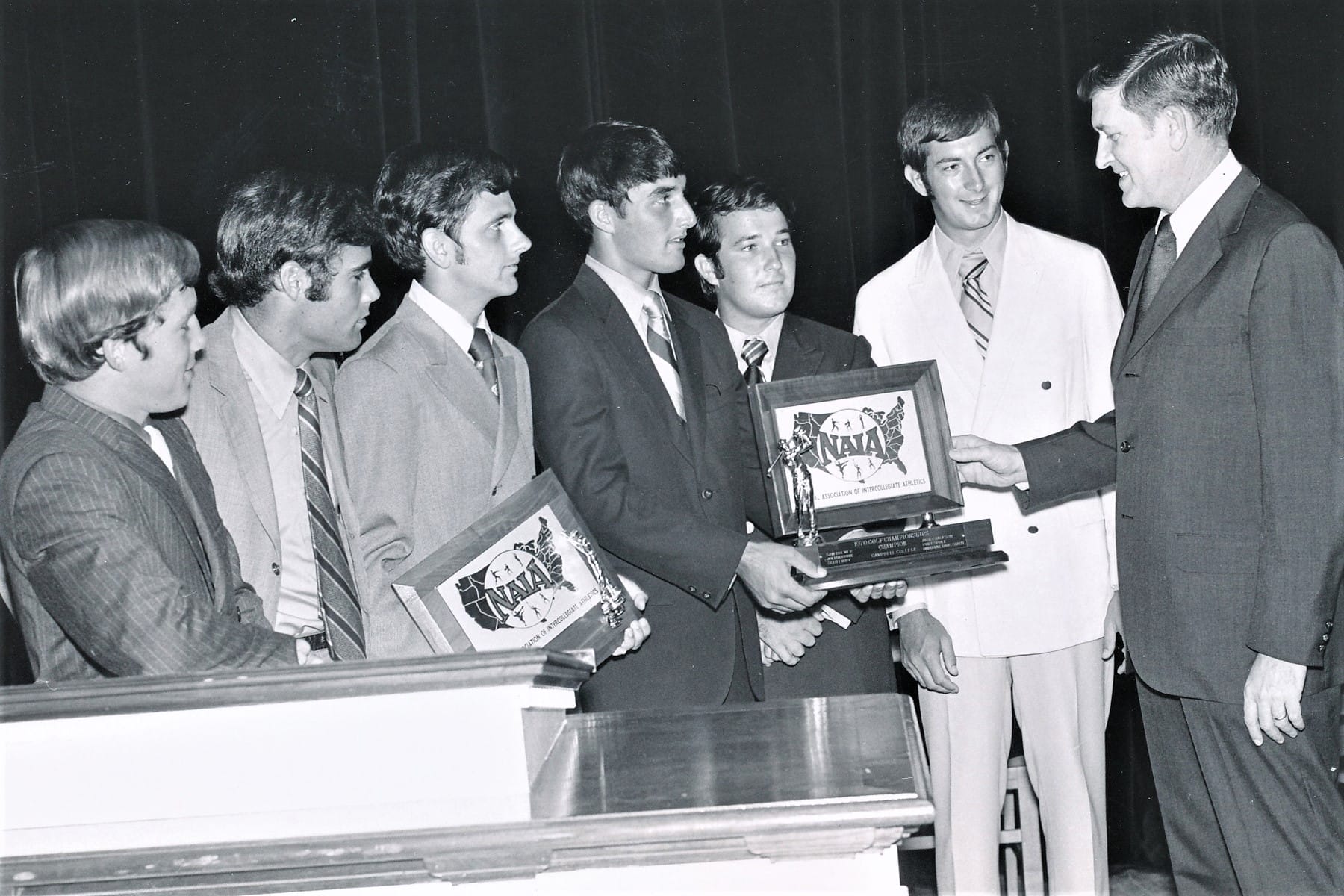
The 1970 NAIA golf champions are pictured above. From left are Curt Soule, Julian Bunn, Jackie Jackson, Sammy Brewer, Ken McDonald, Scott Irby, and former Campbell president Dr. Norman A. Wiggins.
(Campbell photo)

From left are Julian Bunn, Jimmy Gurkin, Scott Irby, and Sammy Brewer at a recent reunion at Willow Springs Country Club in Wilson.

